THE HISTORY OF
ALEXANDRA GARDENS
THE AREA BEFORE
THE PLAZA CINEMA
WESTON SUPER MARE
BY
CHARLES S.P. JENKINS
&
PETER G. YOUNG
-oOo-

-oOo-
Prior to the construction of the Odeon Theatre Weston Super Mere, the area immediately before it is notable for some interesting history.

As the map shows, the road in front of the now-Plaza Theatre, is a long thin island of greenery known as Alexandra Gardens. This area has some interesting history which dates back to The Golden Age of The Railway.
-oOo-

The Railway System of Great Britain started as a patchwork of local rail links run by small private companies developed in the late eighteenth century. These isolated links grew during the railway boom of the 1840s into a national network that were run by over a hundred competing companies. During the 19th and early 20th centuries, many of these companies amalgamated or were purchased by competitors. By 1923, the railway system was run by four companies: the Great Western Railway(GWR), the London and North Eastern Railway (LNER), the London, Midland and Scottish Railway (LMS) and the Southern Railway(SR) which were nationalised to form British Railways in 1948.
-oOo-
In order help maintain Bristol’s position as Britain’s second port, merchants in both Bristol and London came up with a plan to build a line between the two cities. The name Great Western Railway (GWR)was adopted on 19th August, 1833, and was incorporated by the Great Western Railway Act 1835 (5 & 6 Will. 4. c. cvii) on 31st August, 1835. The first trains ran in 1838 with the initial route completed between London and Bristol in 1841.
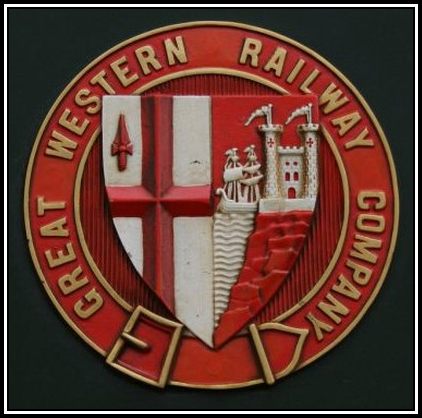
It was while the London to Bristol line was being laid that a railway was proposed between Bristol and Exeter. The Bristol & Exeter Railway (BER) acquired its Act of Parliament on 19th May, 1836. Construction eventually began in 1838 and the first section of the line between Bristol and Bridgwater opened in May 1841. The line finally reached Exeter on 1 May 1844. To reduce the cost of building, operating locomotives and rolling stock, the company leased its line to the GWR, which operated the Bristol and Exeter traffic until 30th April, 1849.
 The Bristol & Exeter Railway (BER)
The Bristol & Exeter Railway (BER)
The BER began service into Weston-super-Mare on 14th June, 1841. This route was not the one that serves the present station, but rather a single-track branch line from Weston Junction RailwayStation, which was midway between the present-day Worle and Uphill Junctions. The terminus of the line was a small station in Regent Street close to the High Street.
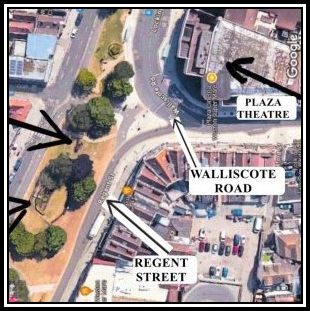
The trains on this first branch line were made up of two or three small carriages which were hauled by a team of three horses. By 1850 a limited number of trains were operated by steam locomotives, however horses continued to be used until the end of March 1851. The station had a train shed covering the two tracks to house coaches when not in use, but only one passenger platform. Between the station and the High Street was the Railway Hotel, and in the other direction, a level crossing which allowed the line to cross Locking Road. Later, a small engine shed was built here to house the steam locomotive.
The original Weston Super Mare Station closed in 1851 and a new one built on the outskirts of the town centre. Following its closure, the land was eventually gifted to the town and planted with trees, giving rise to its unofficial name of The Plantation.
-oOo-

This area was acquired from the railway and conveyed to the Weston Improvement Commissioners in September 1871. Following its acquisition, the land was designated for the purpose of public gardens and pleasure grounds of an ornamental character, which led to the development of Alexandra Gardens.
Apparently in the late 19th Century, Alexandra Parade had three lines of trees together with a drinking fountain. By 1909, the area was described has having a bleak appearance, and £500 was designated by the Urban District Council to improve the look of the area. As a result, it was planned to use the money to plant shrubs and surround it with a three-foot fence. In addition, the drinking fountain was to be kept and garden seats were planned to be added.
-oOo-
A Floral Clock was planned in 1935 for Alexandra Gardens and was planted by The Lions Club who would maintain it for a number of years. And in 2006, the local Rotary Club presented the town with a non-working replica of a steam locomotive which was installed in the Gardens.
-oOo-

At Alexandra Gardens, on the site of the original Weston Super Mare Railway Station, is a non-functional scale replica of the first steam locomotive to operate on the GWR. It was presented to Weston Super Mare by the local Rotary Club in 2006 to commemorate the bicentenary of the birth of Isamband Kingdom Brunel (1806-1859), who designed the first station here, and also in memory of Mr. Axentis Michael.
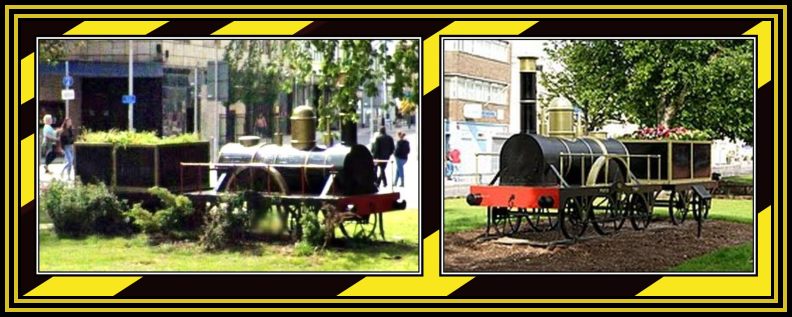 The Replica of North Star at Alexandra Gardens
The Replica of North Star at Alexandra Gardens
 The Plaque placed before The Replica
The Plaque placed before The Replica
Photograph taken & provided by Mr. Peter G. Young
-oOo-
 The North Star Replica with The Plaza Theatre
The North Star Replica with The Plaza Theatre
Photograph taken & provided by Mr. Peter G. Young
-oOo-
This replica is of the engine, North Star, which was one of the twelve engines of a Star Class of 2-2-2 Broad Gauge Steam Locomotive designed by Robert Stephenson (1803-1859). It was the first train to run on the Great Western Railway between London and the South West that had been built by the engineer, Isamband Kingdom Brunel.
The Great Western Railway Star Class of 2-2-2 consisted of twelve Broad Gauge (i.e., 5 feet 6 inches) steam locomotives that were used for passenger train work. These engines had originally been built for the Broad Gauge New Orleans Railway. However, they were introduced into service by GWR between November 1838 and November 1841 and continued in service until withdrawal between April 1864 and September 1871.
 North Star Locomotive seen here at The Museum of the Great Western Railway, Swindon
North Star Locomotive seen here at The Museum of the Great Western Railway, Swindon
Photograph taken by Mr. Andrew K. Murray and which appears at
Preserved British Steam Locomotives
-oOo-`

Floral Clocks were once very popular with the public and could be found in many towns and cities throughout the U.K.
The largest Floral Clock found in the U.K. is present in Edinburgh. It was commissioned in 1903 and was the first of its kind in the world and was planted half way down the stairs into West Princes Street Gardenat the foot of the mound on which Edinburgh Castle sits.
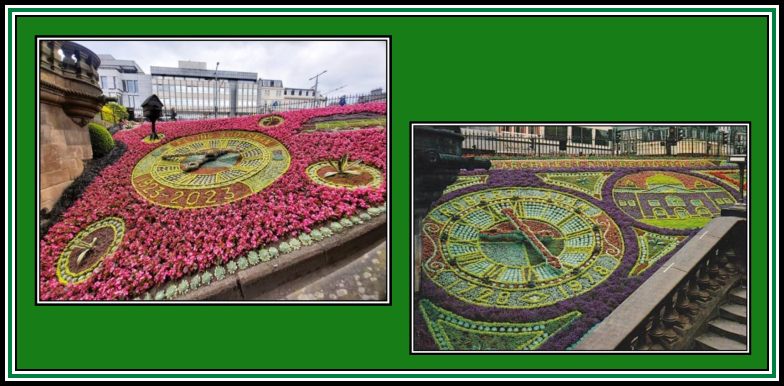
The inspiration for the Clock came from a carpet bedding display in the Garden to commemorate the Coronation of Edward VII.
-oOo-
In 1935, a Floral Clock was laid down in Alexandra Gardens in Weston Super Mare at the site of the original train station.
 The Floral Clock during its Installation in 1935
The Floral Clock during its Installation in 1935
 The Floral Clock in 1935 at the time of its completion
The Floral Clock in 1935 at the time of its completion
-oOo-
A Floral Clock was planted in 1935 in Alexandra Gardens by the Town Council (The North Somerset Council?). Approximately 20,000 plants were planted every year in order to maintain the Clock in a pristine condition, which required much effort by a group of volunteers.
-oOo-
In 1951, the Cock was restored, since presumably, at that time, it was a little less than pristine! Sadly, over the years, the Hands of the Clock, and eventually the Clock design itself, no longer appeared at the site. Seeming the Clock Hands had been placed in storage for safe keeping, and now seem to have disappeared.
-oOo-
 Simon Gledhill at the Compton Theatre Organ of the Odeon Theatre Weston Super Mare (May 2019)
Simon Gledhill at the Compton Theatre Organ of the Odeon Theatre Weston Super Mare (May 2019)
Photographs taken & provided by Mr. Peter G. Young
In 2005 to mark the 70th anniversary of the installation of the Compton Theatre Organ at the Odeon Theatre Weston Super Mare, The West of England Theatre Club invited Mr. Peter Young to design a new arrangement for the Floral Clock to celebrate this event. The cost of the plants and installation was to be covered by the Town Council.
 Photograph taken & provided by Mr. Peter G. Young
Photograph taken & provided by Mr. Peter G. Young
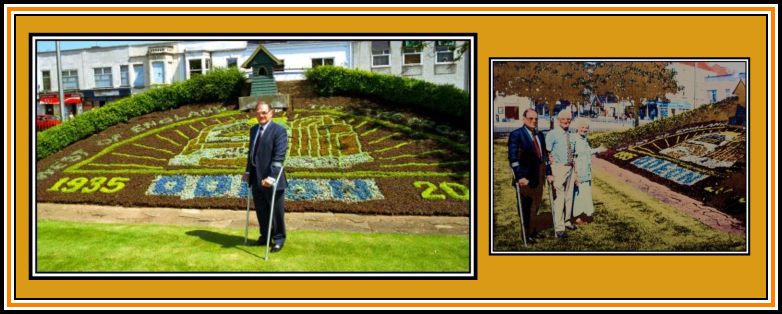 Left: Mr. Peter g. Young; Right: Mr. Young with Mr. Frank & Mrs. Edna Smedley
Left: Mr. Peter g. Young; Right: Mr. Young with Mr. Frank & Mrs. Edna Smedley
(Mr. Smedley was Fred Smedley was the chairman of the West of England Theatre Organ at this time)
Photographs provided by Mr. Peter G. Young
-oOo-
In 2006, the Council stated that it was unable to afford the upkeep of the Clock and there was some discussion as to replacing it. Meanwhile, the Rotary Club placed the replica of the North Star (see above) in Alexandra Gardens, which required less maintenance and so kept costs down.
The task of tending to the Clock was taken over by members of the Weston Lions Club, who volunteered their time and assumed the responsibility of overseeing the work necessary to maintain the area.
Unfortunately recently, the group was unable to find a sufficient number of volunteers to continue this work. It should be remembered that maintaining the area required a great deal of work: For example, in order to maintain the plants in a healthy state, watering is required three times each day and this volume of water was not always adequate and complaints began to be heard pertaining to the shabby look of the then-vandalised clock.
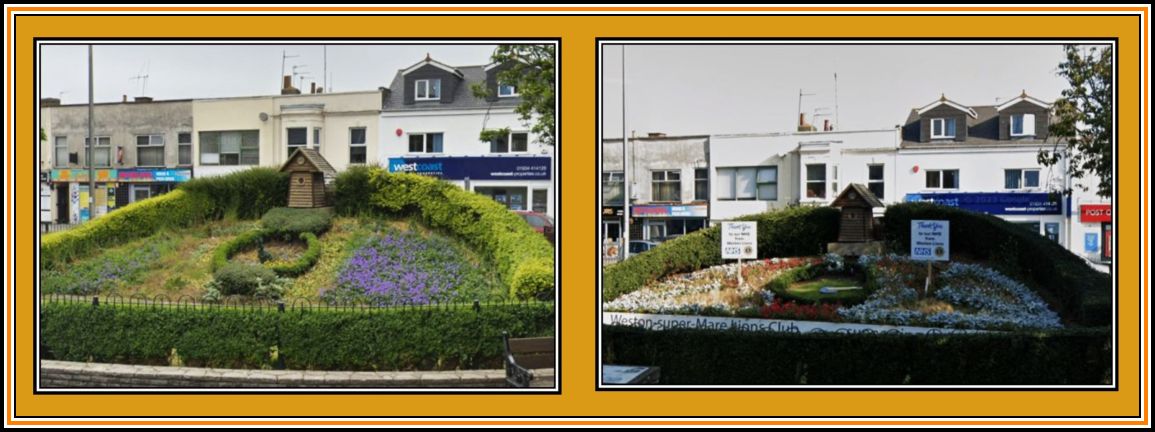 The Floral Clock in (Left) 2018 and (Right) in 2020
The Floral Clock in (Left) 2018 and (Right) in 2020
-oOo-
In February 2024, Bristol World published a series of photographs of the Floral Clock through the 89 years of its existence:
-oOo-
In a more recent effort to help continue the maintenance of the area, the Weston Lions decided to concrete over the Floral Clock and it was suggested that a local artist paint a mural of sunflowers on it.
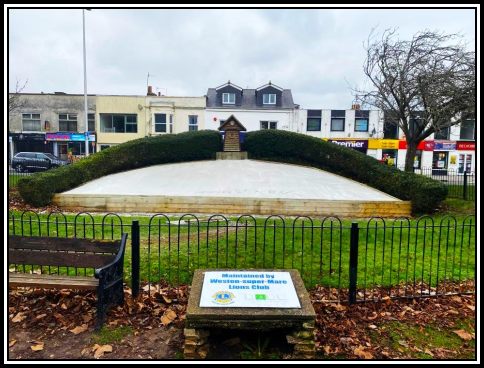 The Floral Clock area now shown here covered by Concrete
The Floral Clock area now shown here covered by Concrete
Photograph taken & provided by Mr. Peter G. Young
-oOo-
This action brought forth a loud out pouring from the local population against this action, which was widely reported in the London newspapers and on television.
The outcry put the local Council in a very difficult position who then counted by issuing a statement where they pointed out that concreting over of the area had been done without consultation with them as owners of the land. Further discussions continue between the Council and the Weston Lions in order to find a solution that would see a return of a floral display to the area together with an assurance of its up keep.
Let us hope that a suitable solution will be found and that the area will once again offer a floral arrangement for the populace to enjoy.
-oOo-
On the 11th April, 2024, the following article appeared in print where a plan was put forward to revive the area.
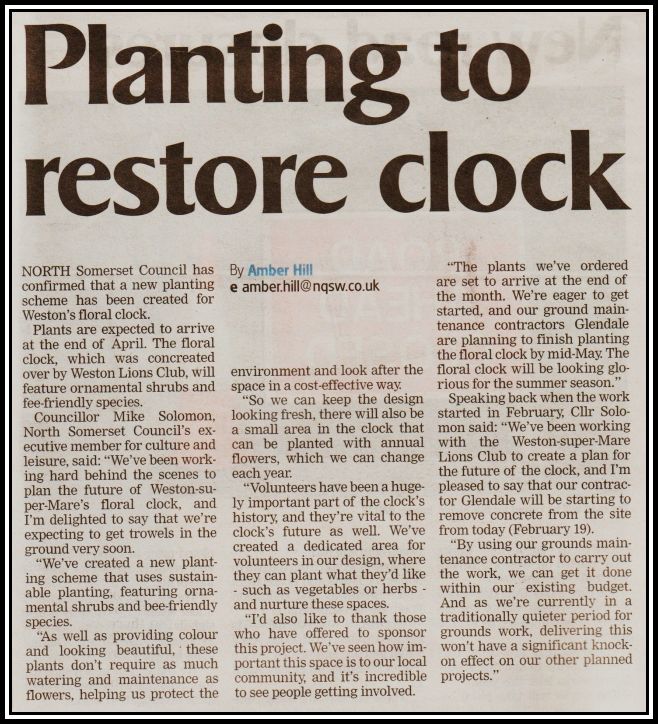
——oooOOOooo—-
——oooOOOooo——
——oooOOOooo——
——oooOOOooo—-
